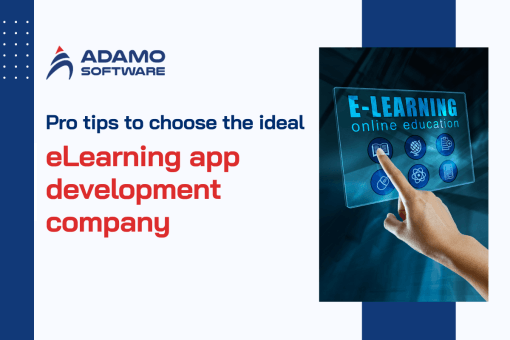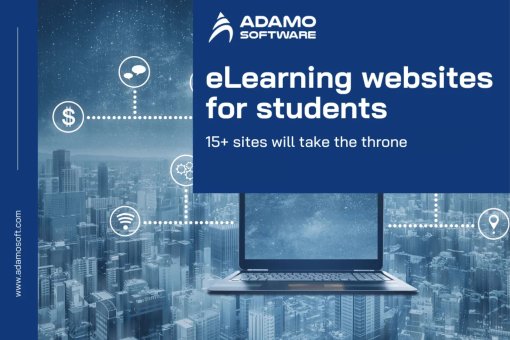What is a social learning platform? Benefits and top examples classified

Learning has been changing, given the advancement of technology in the current society. The social learning platform is a new concept in education and business. But what is a social learning platform? It is an online platform where individuals can participate, interact, and contribute to social learning resources. These platforms contain some elements of social media since students can help each other and discuss while studying.
So, businesses and educators must know what is social learning platform to improve employee or student interaction. In this article, we will explain what is a social learning platform, why it is useful, the most popular examples, and how to select the right social learning platform for your organization.
I. What is a social learning platform?
A social learning platform is an online application or a website that integrates learning with social networking. These platforms enable people to interact, contribute, and learn through real-time content. Traditional e-learning systems focus on individual performance. Social learning platforms are based on collective learning, where learners can interact with each other, ask questions, and discuss the material.
In this paper, we define a social learning platform as a combination of social media elements and learning management systems. Other features include creating groups, posting comments, sharing learning materials, and participating in group discussions. This makes learning more interactive. This approach engages everybody and creates an important group atmosphere for learning and involvement.
Another way to answer what is a social learning platform is by analyzing flexibility. These platforms accommodate various learning modalities. They provide videos, articles, quizzes, and live sessions. The social feature is useful since it enables users not only to passively receive content but also to create it, thus enhancing the learning process. This platform is ideal for schools, companies, and individual learners who wish to learn socially.
II. Grasp the crucial benefits of social learning platforms
Learning platforms have emerged to be one of the best methods of acquiring and sharing information. This is because the social learning platform is not limited to just being defined by its features. These are not just tools for learning. They are tools to improve teamwork, participation, and the overall experience of the learning process. Social learning is a force that is evident for individual learners and businesses. Next, we will explain the benefits for learners and organizations.
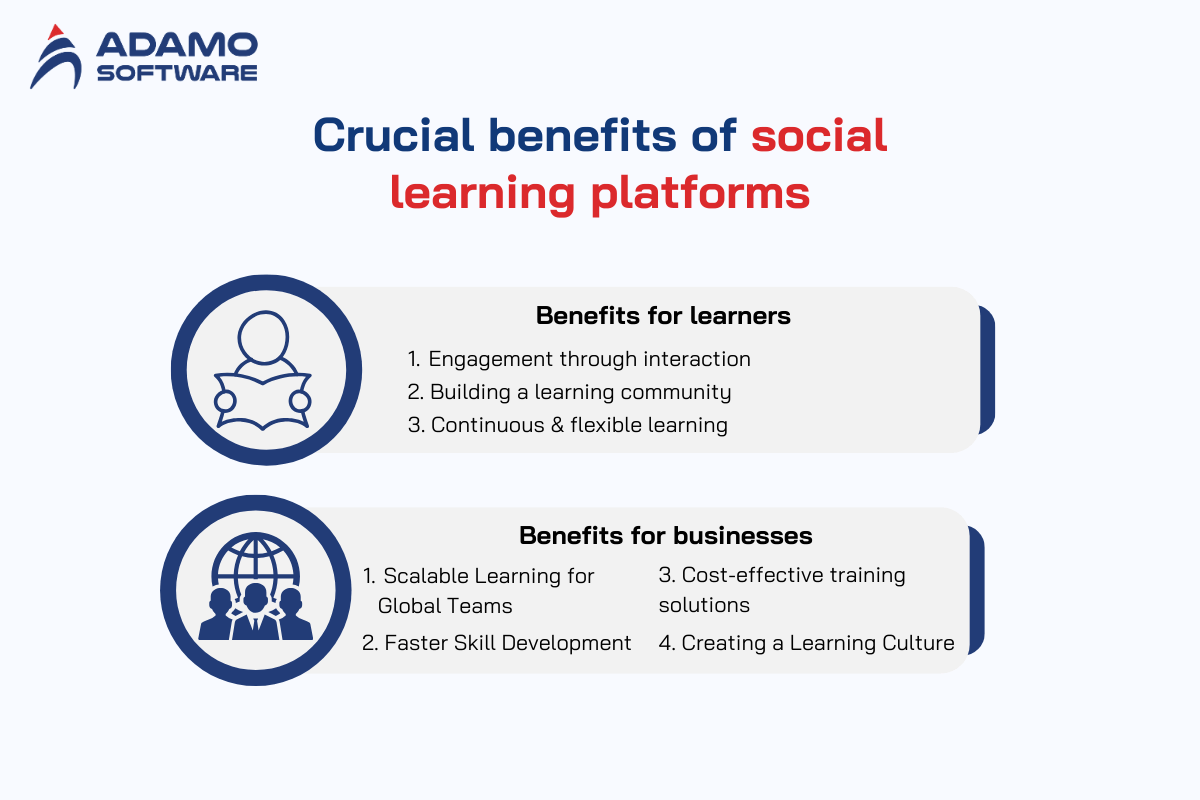
1. Benefits for learners
Engagement through Interaction
- Understanding what is a social learning platform shows how it increases learner engagement.
- Learners can participate in discussions, give peer feedback, and collaborate on projects.
- Real-time interaction with peers makes learning more engaging than traditional methods.
Building a Learning Community
- Social learning platforms create a sense of belonging by fostering peer-to-peer connections.
- Learners can share experiences, ask questions, and seek help from others, which improves understanding.
- This community aspect enhances knowledge retention and creates a supportive learning environment.
Continuous and Flexible Learning
- With social learning platforms, learners can review the content and ask questions anytime.
- It is not limited by time or place and provides opportunities for learning that can happen after a course is over.
- This flexibility empowers learners to build their progress at their own pace.
- Flexibility makes education more adaptive.
- It also shows that a social learning platform is all about forms of learning.
- Content and delivery of differentiated instructional materials, including videos, articles, podcasts, and quizzes, are available to the learners.
- Flexibility facilitates the need to address learning style needs, which increases motivation levels and rates of retention.
- There is no restriction on time or place, enabling continuous learning beyond formal courses.
- This flexibility helps learners progress at their comfort level, making education more personalized.
2. Benefits for businesses
Scalable Learning for Global Teams
- When considering what is a social learning platform, businesses see its value in training large teams efficiently.
- Employees across different locations can access learning materials and share knowledge with peers.
- This promotes collaboration and breaks down departmental silos, improving internal communication.
Faster Skill Development
- Employees can learn from one another, speeding up skill acquisition.
- Instead of relying on traditional training, employees can tap into the expertise of their colleagues.
- This peer-driven learning approach makes training more effective and helps close skill gaps quickly.
Cost-effective training solutions
- Social learning platforms reduce the need for expensive in-person training.
- By delivering online learning experiences, businesses can save on travel and material costs.
- Companies can track employee progress and measure training success using built-in analytics.
Creating a Learning Culture
- Understanding what is a social learning platform also shows its role in promoting a culture of continuous learning.
- Employees are encouraged to share knowledge, ask questions, and actively participate in learning.
- This boosts innovation and adaptability, making the business more competitive in a fast-changing market.
Last, knowing what is a social learning platform shows its importance in driving learning culture in organizations. Through knowledge sharing and a learning culture promotion, the organization can produce an innovative and flexible force. In today’s world, this type of versatility is essential for sustained performance in a hyper-dynamic business climate.
Also read: Social learning platform: Key features, how to build and emerging trends to consider
III. Top examples of social learning platforms
Today, many social learning platforms are intended to improve social learning, collaboration, and interaction among learners. The cited platforms combine social aspects with learning material and are more communal. To find out what a social learning platform is, let us discuss some of the best examples and their distinctive characteristics.
1. Docebo
Overall, Docebo is flexible and fits into different organizations, from business-oriented to academic institutions. It relates to the extent to which formal and social learning is integrated into the structure of offering a composite learning atmosphere.
Key features:
- Specifically, social learning tools have been integrated and ready to be used for other learner engagement.
- Individual learning path based on the definitions of artificial intelligence.
- It doubles the learners’ participation through incentives.
- Applications for building learning content or publications.
- Integration into other applications to boost its effectiveness as a suitable and elastic solution for different companies and educational establishments.
2. 360Learning
Focused on collaborative learning, 360Learning will benefit teams that need training or skill set upgrades within an organization. These features make it especially valuable for companies interested in developing a culture of learning and collaboration. This platform allows learners to upload their content and share their knowledge.
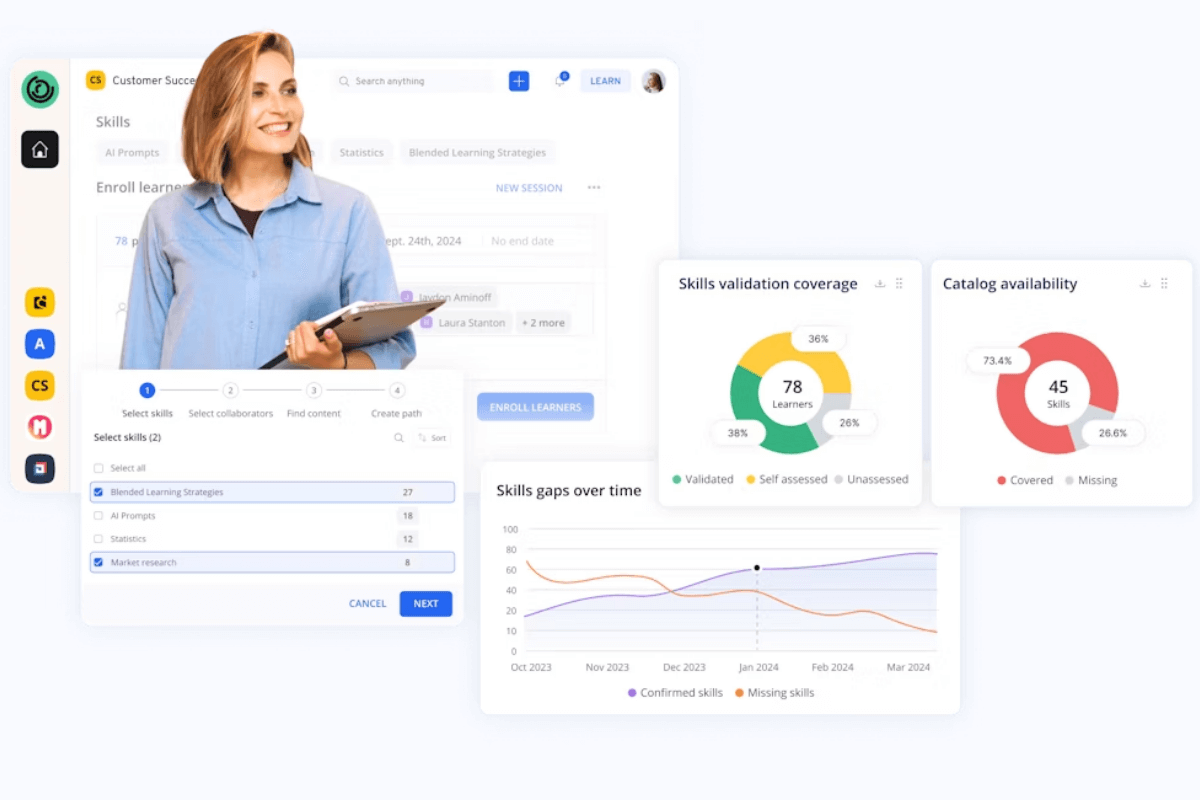
Key features:
- Course generation and distribution platforms.
- Opinion sharing or discussion and peer feedback to increase awareness.
- Simple interface, which enables the development of the course in the shortest period.
- Self-assessment tools to track the progress of team learning.
- The ability to listen to content on the go if it is stored in the user’s device for reference organizations, from business companies to academic settings.
- It deals with the structural integration of formal and social learning, giving a full learning environment.
3. Miro
A visual collaboration tool such as Miro is often employed for brainstorming and works as a social learning platform. It offers a whiteboard used in learning activities that can be used at the same time by learners, hence suitable for group work.
Key features:
- Pre-integrated social learning tools for engagement with other learners
- Custom learning journey based on the concepts of artificial intelligence.
- Rewards to increase learners’ participation.
- Content authoring tools for creating learning content.
- Connection to other applications to supercharge its operation offers a flexible and scalable solution for businesses and educational institutions. It focuses on blending formal training with informal social learning, providing a complete learning ecosystem.
4. Maven Learning
Maven Learning is a SNS for social learning targeted to the community of learners with mentors or professional tutors. It promotes cohort methodology, a course completion approach that involves learners covering the content in large groups.
Key features:
- Fluid academic models based on cohorts with an emphasis on group learning.
- Exposure and interaction with working professionals and immediate feedback.
- Conducting live classes and professional workshops to create more interest among the students.
- Learning fosters the accomplishment of individual learner goals based on their feedback.
- Support groups that involve people with similar conditions addressing each other are platforms designed to connect learners with expert instructors.
- It focuses on cohort-based courses, where learners progress through content together, enhancing interaction and peer support.
5. iSpring Learn
iSpring Learn can be described as an LMS and a social learning platform. Through it, it becomes possible to engender, store, organize, and monitor learning content, and to facilitate communication among learners.
Key features:
- Learning management systems for delivering content is essential for a course.
- Discussion boards and chat rooms-tools meant for social learning.
- In-depth analysis of the learner that helps in his performance assessment.
- Extended mobile learning that can be used on devices of choice.
- Seamless compatibility with most-used business apps such as Zoom and Microsoft Teams.
- Connect learners with expert instructors.
- It focuses on cohort-based courses, where learners progress through content together, enhancing interaction and peer support.
The above examples assist in understanding what is a social learning platform. Facebook, for instance, makes it easy for students to develop community and interact with their peers. Peer-to-peer makes it easy for students to work and learn together in real time. Learning through these examples about what is a social learning platform shows how many tools exist to help learners and companies alike.
IV. How to select the appropriate social learning software
Choosing the appropriate social learning platform comes with many considerations to ensure that the best fits the learners and the institution. This segment will focus on the different considerations in choosing a particular social learning platform. The following steps can facilitate you in this procedure:
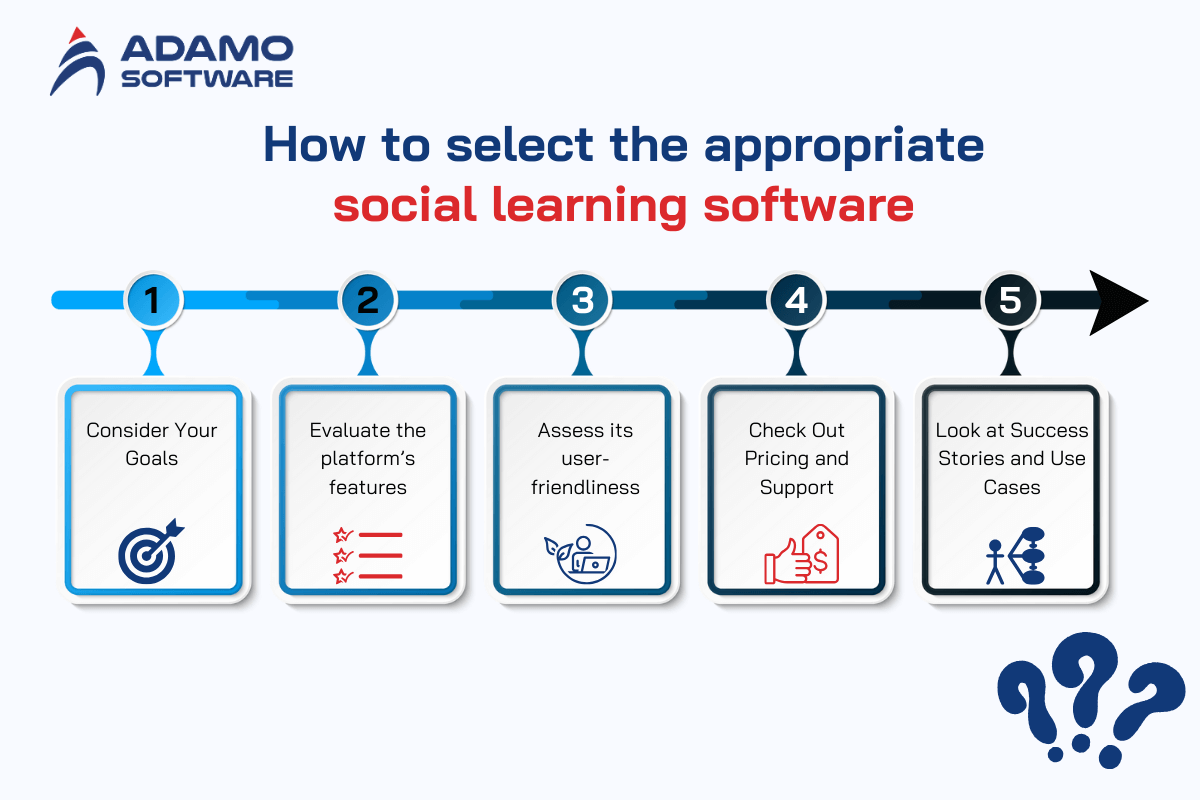
1. Consider Your Goals
- The first step that should be undertaken is to establish the learning expectations and the institution’s desires to be addressed.
- Reframe those queries, in what context, to what extent do you want the platform implemented and what shall be the expectations from it?
- Envisage what value-added the company aspires from the platform, say, for training employees or enhancing their performance.
- Which classification of a social learning platform will assist you in making sure that your goals are where the platform has solutions for your organization?
- Think of whether the platform is tailored towards the training of employees, enhancing education, or improving skills.
- By definition, a social learning platform clarifies how to optimize the offerings of the platform to achieve its goals.
2. Evaluate the Platform’s Features
- Examples of the features range of these platforms include peer-to-peer interaction, content uploading, instant response, and creativity enhancement tools.
- In that respect, consider features likely to promote interactive communication, for example, discussion boards, peer reviewing, and chat rooms.
- Ensure that the selected platform complies with varied methods through which you will submit content. They can be articles, videos, quizzes, webinars, …
- Note that the features must fit what a social learning platform encompasses, that is engagement and collaboration.
3. Assess Its User-Friendliness
- There should be ease and flexibility in platform navigation for learners and administrators.
- Clutter-free design and layout will initially lead to more activity on the site and lower current information acquisition costs.
- It means thinking about the possibility of creating courses, managing the content, and tracking learners on the platform.
- The complexity of the application is not easily measurable when trying to determine what is a social learning platform and how it can complement the learning process.
4. Check Out Pricing and Support
- Price is often an important consideration. Therefore, it is essential to look at the different pricing structures for the various cloud solutions that one would be using.
- While some service providers may offer the service at a flat fee rate per user, others may offer the service at a fee where it is offered as a subscription service.
- Make sure the platform does not only fit your budget but also has all the features that your business requires.
- Assess the amount of support extended, such as the nature of help given during the onboarding process, available technical assistance, and the frequency of upgrades.
- This means that if it is assumed that your platform is running, there is always someone to take care of it in case problems arise.
5. Look at Success Stories and Use Cases
- It is possible to envision the mechanics of working with such services by looking at the different examples of cases, accomplishments, and feedback from other users.
- Observing the implementation of social learning platforms by other individuals will enable you to choose right.
- The use cases explain how the platform increases learner engagement, collaboration, and achievements.
- Knowing how other people apply to what is a social learning platform will enable you to make a better choice.
- Examples of winning customers will show how the effectiveness of the use has changed in terms of the learner’s engagement, collaboration, and use of the platform.
By following these steps, you will make sure that you choose the most effective and suitable platform for your organization. Therefore, you can take full advantage of a social learning platform for developing a friendly, informative, and interesting learning process.
V. Adamo Software will help your business create an engaging social learning platform
Adamo Software has been in educational software development for years. We have gained the reputation of a reliable provider of several custom software solutions that produce engaging interactive web interfaces. We are experts in educating businesses on what is a social learning platform and creating one suited to your company.

Moreover, Adamo also realizes why you can no longer think of a social learning platform as only learning management. It is about making the environment of a site or a tool as social as possible so that users want to participate and create content. Built-in features such as games, content sharing, and analytics will enrich the learning process and increase the user’s engagement and performance.
Finally, when collaborating with Adamo Software, you get support and updates from the company so that your platform improves as your business expands. We are characterized by cost efficiency, architecture’s modularity, and ability to interface with other systems. The trends and insights from Adamo ensure the created platform will be aligned with business requirements and users’ expectations.
Working with Adamo Software, organizations can leverage what is a social learning platform for maximum engagement, interaction, and learning outcomes.






